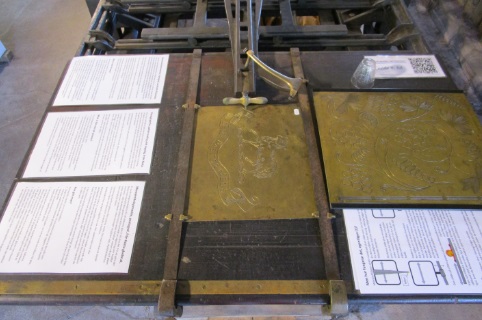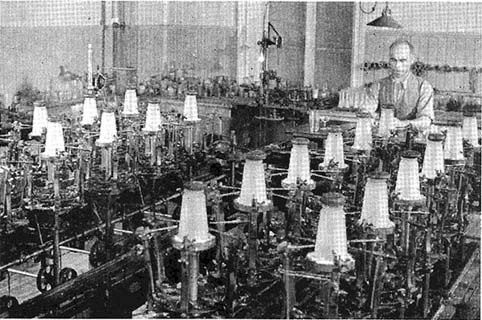— — This is an outdated page, click here for the updated page — —
Our pantographs
We show two pantographs of different constructions. One is horizontal and takes 24 glasses, the other one is vertical and takes 12 glasses.First: Let's figure out what a pantograph is. A pantograph prepares a number of glass (in our case 24 and 12 respectively) for etching. We have been told that Reijmyre glasswork had one for 36 glasses.
Etching is a way to decorate glasses. It is faster than
the mechanical engraving.
Once you have seen sufficiently many glasses the differences becomes more and more obvious. With etching the
lines making up décor are distinct, they are always about the same width and they all are about as deep
into the glass. In the case of a pantographed pattern, or a Guilloché pattern, there will be no
continuous surfaces in the pattern. These two machines can only draw lines. To give the impression of a
continuous surface you will see closely spaced lines
(compare hatching).
Thus: Line etching is an excellent technique for the decoration of tableware. The pantograph is an excellent
machine to draw patterns with "loose ends" or other irregularities. The Guilloché machines
will always generate continuous lines.
Read more about the difference between pantographed and Guilloché patterns
here.
As we understand it has lots of glassworks had at least one pantograph as seen over time. Guilloché machines were even more common. We have attempted to compile information about where and when these machines were used in Sweden, see "etching machines" in Sweden.
We do not know where our vertical pantograph was used but we found it in a warehouse in Kosta.
The horizontal pantograph was used at Kosta glasswork from (as we think) the early-mid 1890's until the mid-1980's. That is almost 100 years. We have not bee able to identify the manufacturer but we can see that many details are different from the 24-glass pantograph hosted by the Center for cultural heritage in Växjö. Their pantograph was used in Åfors.
These things lead us to the conclusion that all three have different manufacturers. None of them carries a sign from the manufacturer.









